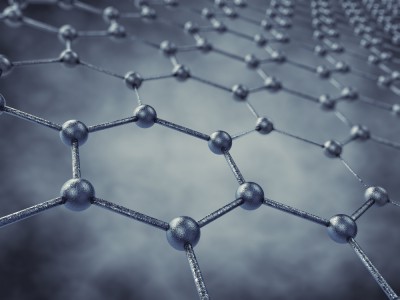
Combining electronic and magnetic properties could open up a vista of opportunities to exploit for data storage and computations. In particular there is keen interest in embellishing graphene’s uniquely impressive electronic properties by decorating it with magnetic atoms. So far it has been difficult to study these systems because of interference from the environment. Now Chao-Yi Cai from Peking University in Beijing, China, and Jian-Hao Chen at Peking University and the Collaborative Innovation Center of Quantum Matter in Beijing have developed homemade apparatus that allows them to measure the quantum transport properties of decorated graphene in situ after depositing the cobalt atoms.
Cai and Chen fabricated devices from exfoliated graphene, which they adhered to SiO2/Si substrates before affixing gold electrodes plated with chromium in a four-wire configuration. They then transferred these devices to their ultrahigh-vacuum quantum transport measurement apparatus, where they ran several cobalt deposition procedures, measuring the device behaviour in situ after each run. They focus on cobalt atoms in particular, since as they point out in their report of the work, “A previous theory predicted that among the traditional ferromagnetic elements (Fe, Co, and Ni), only Co atoms can induce magnetism in graphene.”
Cobalt atoms like to cluster
The researchers noted a decrease in conductivity, a shift in the minimum gate voltage and a decrease in the minimum conductivity as the number of cobalt deposition runs increased. These trends are consistent with what might be expected from charged particle scattering and the researchers attribute them to n-doping from the cobalt atoms.
However they also noticed additional gate-dependent resistivity that did not behave as expected for scattering from point-like charges. Further investigation revealed that the cobalt atoms were forming clusters on the surface, even on graphene at cryogenic temperatures where there is little energy for atoms to move along the surface.
The next surprise was the observation of an increasingly temperature-dependent resistivity. Graphene has notoriously low resistivity, which has very little temperature dependence, but once decorated with cobalt atoms Cai and Chen observed insulator behaviour, particularly at low temperatures and around the Dirac point, where graphene’s conically shaped valence and conduction band meet.
Read more

High-quality bilayer graphene goes large

High-quality bilayer graphene goes large
Persistent quantum interference
Finally the researchers applied a magnetic field perpendicular to the device. In pristine graphene the magnetoresistance – where a material’s electrical resistance changes in response to a magnetic field – oscillates as the field increases. These “Shubnikov-de-Haas” oscillations disappeared as they deposited more and more cobalt atoms. They also observe negative magnetoresistance behaviour that cannot be explained simply as the cobalt atoms conferring ferromagnetic behaviour on the sample. Instead the researchers attribute the negative magnetoresistance behaviour to the appearance of weak localization effects, which are more pronounced in 2D materials.
“In systems with weak localization, application of the magnetic field perpendicular to the sample breaks the time-reversal symmetry between forward and backward hopping paths, destroying the quantum inferences thus generating a negative magnetoresistance,” they explain in their report.
Cai and Chen highlight that even at magnetic fields as high as 9 Tesla the electrons have a large “cyclotron radius”, which describes their circular trajectory in a magnetic field. When the cyclotron radius becomes much lower than the phase decoherence length the quantum interference is suppressed leading to classical behaviour. However these conditions are not met in their cobalt-decorated graphene sample even at 9 Tesla, so that the negative magnetoresistance behaviour remains unsaturated.
Full details are available in Chinese Physics B.



